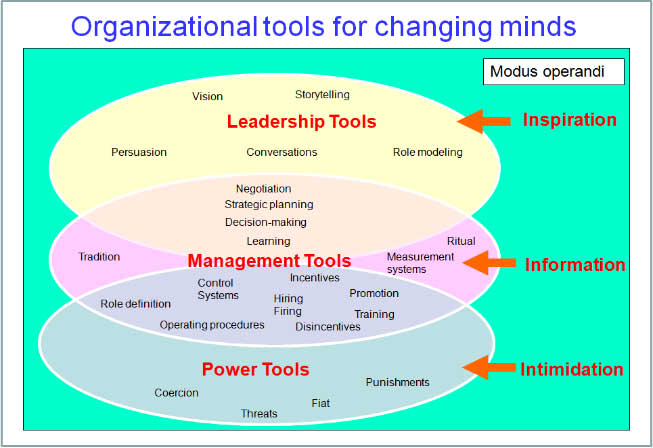The 4 Types of Organization CULTURE. by Jessica Kriegel
The alignment of culture with Org. Strategic SMART Goals1- Clan-Oriented Cultures. Focus on collaboration ,teamwork ,family like atmosphere
2- Adhocracy-Oriented Cultures. Emphasize, innovation , risk taking and flexibility
3- Market-Oriented Cultures. Prioritize competition, results and achievement of goals.
4- Hierarchy-Oriented Cultures. Value structure, stability and efficiency through clearly defined roles and rules.
___________Transcript_______________1- Clan-Oriented Cultures. : the clan oriented culture is often found
in small or family business that are local, employees in this type of
culture are very close with one another, there's more focus on working
and completing tasks as a whole. We could say this is the R of smart,
which is Realistic.
2- Adhocracy-Oriented Cultures: in this type of culture, the people
within value risk taking, innovation and taking ownership, one of
the keys to success in this type of culture is self management, which
means there is less emphasis on authority of hierarchy, this type of
culture grants them the ability to go in to the market easier and faster
than other organizations we can align this with the letter A which is Accurate.
3- Market-Oriented Cultures: in this video it is mentioned this type of culture is focused on getting specific predetermind results, they are heavily competitive, constantly looking at their competitors in the market, one of their biggest result is market share, achieving results is the no.1 most important thing in market cultures. we can align this culture with the letter M which is Measurable.
4- Hierarchy-Oriented Cultures. : this type of culture is strictly controlled, they value doing things right. one of the main components of this culture is :Stability, where it is incredibly important as is efficiency, an example of this culture shown in the video is the military. we can align this organization with the letter S in smart, standing for Strategy
------------------------------------------------------------------------What Made Nablus as City State, a magnet city and famous.?
I live in Nablus, a city so old and recognized historically, as one of the oldest world's City-State in the Middle East, especially during the Ottoman Empire. Wealth generated from trade and industry fueled family ties and family relations to secure power and authority for ages. The city was highly integrative due to inter marriage, small walled city with definitive boundaries, the power and control to rule the city maintained in the hands of dignitaries and city-council, I can say the city as an organization was integrative due to a high common, parochial interests, common external environment challenges. Size and technology, made a huge paradigm shift to be situated between differentiation and ambiguity. lesser degree of consistency and consensus is evident opening the doors to paths innovations and creativity.
CULTURE consists of specific LEARNED norms based on attitudes, values and beliefs all of which exist in every society. culture can't be isolated from influencing factors such as Economic ,RELIGIOUS and Political conditions.
{ Organizational culture is one of those items that you can’t describe what it is, but you know when it’s broken. }
Forming ... Re-Forming ... Trans-Forming Culture
"Org Culture is the Reflection of our actions...and we are affected by them."
Cultural Transformation Simon Sinek
Organizational culture includes an organization's expectations, experiences, philosophy, and values that hold it together, and is expressed in its self-image, inner workings, interactions with the outside world, and future expectations. It is based on shared attitudes, beliefs, customs, and written and unwritten rules that have been developed over time and are considered valid.
How to IMPLEMENT THE CHANGE in the Organizational Culture ??
Changing an organization’s culture is one of the most difficult leadership challenges. That’s because an organization’s culture comprises a complex set of goals, roles, processes, values, communications practices, attitudes and long cherished assumptions.
The good news? Organizational culture CHANGE IS POSSIBLE.
Culture change requires 1- Understanding, 2- commitment, and 3- tools.
There are three major steps involved in changing an organization's culture:
- //How to Understand Your Current Culture//. Before an organization can change its culture, it must first understand the current culture, or the way things are now. Do take the time to pursue the activities in this article before moving on to the next steps.
- Once you understand your current organizational culture, your organization must then decide where it wants to go, define its strategic direction, and decide what the organizational culture should look like to support success. What vision does the organization have for its future and how must the culture change to support the accomplishment of that vision
- Finally, the individuals in the organization must decide to change their behavior to create the desired organizational culture. This is the hardest step in culture change..

1- Leadership tool.
2- Management tools.
3- Power tools.
_________________________________________________________________________________
The Five Pillars of Change ( Transformation )
1st pillar :The creation of a greater purpose
- Everybody regardless of culture,age,country and education wants the same staff which is to be able to deal with people in a good team work situations,support each other, fun at work and clarity of what they have to do in order to be successful , Creating an ideal working environment you give people tools in order to achieve that.
2nd pillar:The methodology that makes it possible
- We use directive communication psychology.
3rd pillar:A common language
- People have difficulties in communicating,if you can create a communication process that is fun people can communicate with each other in a good way to accomplish greater purpose.
4th pillar: Unified Identity
- Helps to put people together.
5th pillar: Supportive Environment
- Helping people to come up with their own expectations and support them.
________________________________________________________________________________
Strategies for Successful Org. Change ( Transformation )
1- Top Management Support.
2- Collective Awareness.
3- Involvement Level.
